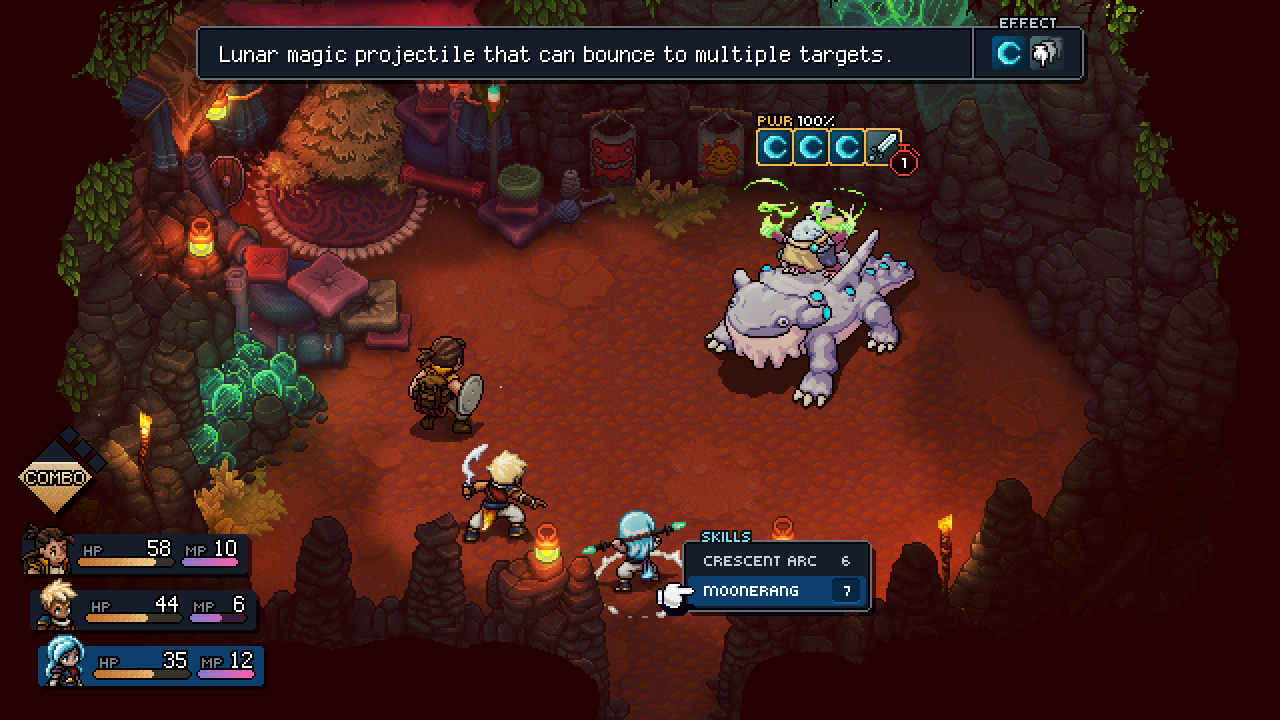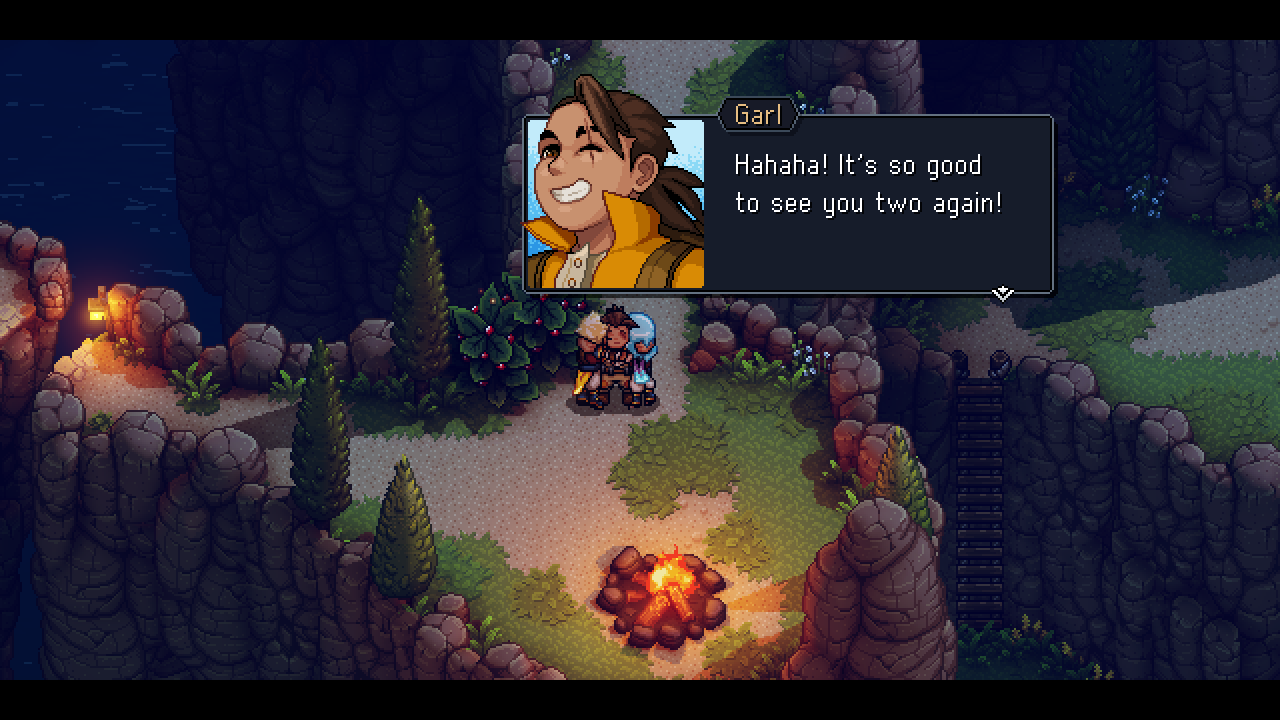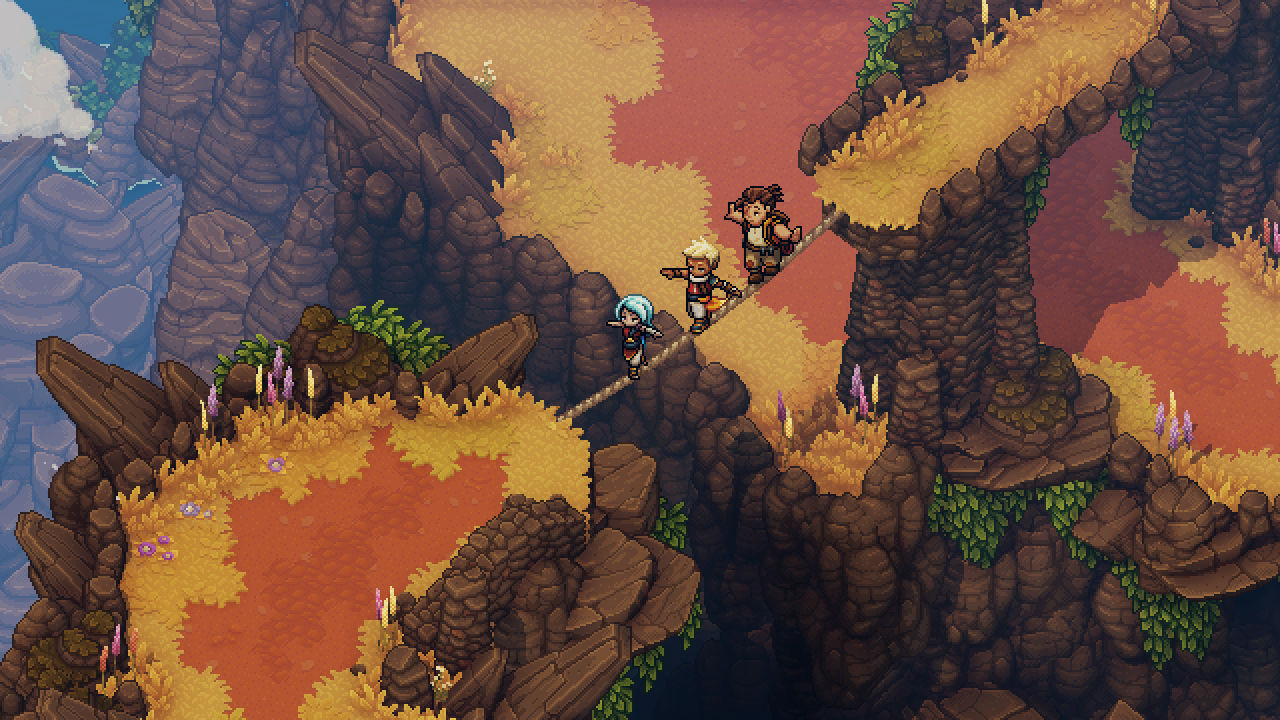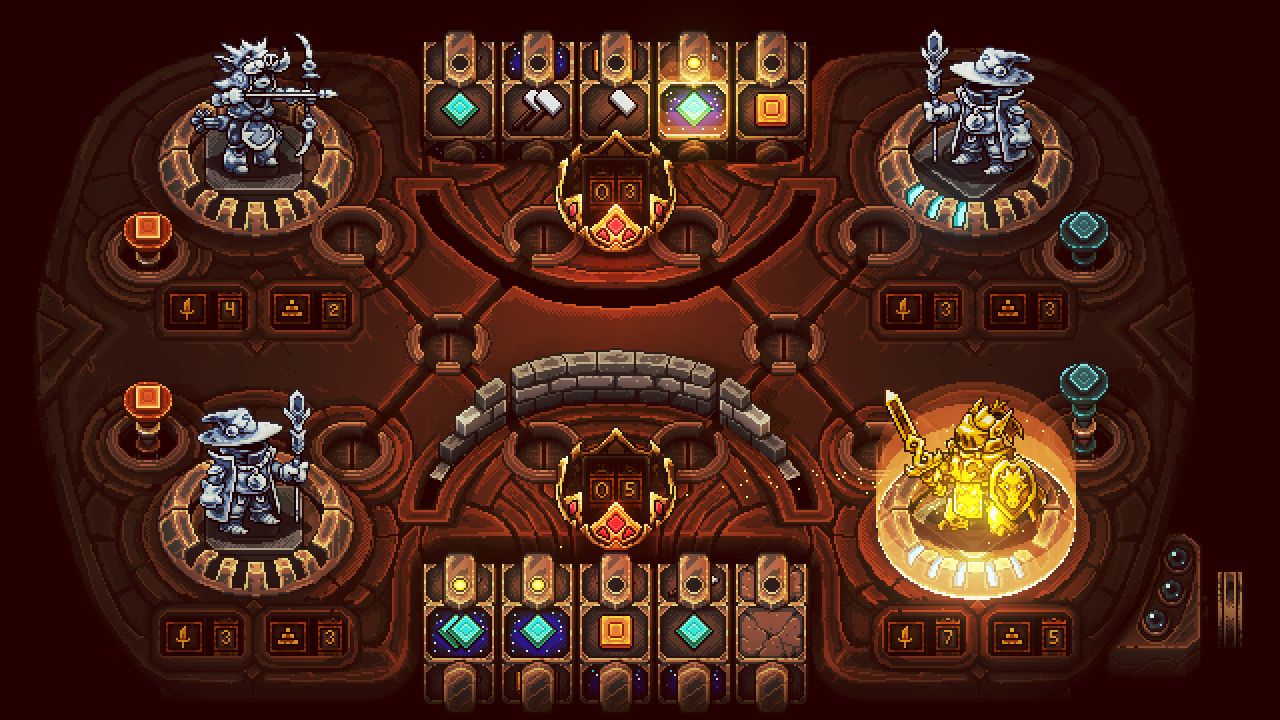We’ve all had moments where you’re half-watching a game show presentation, one of those seemingly endless streams of trailers, and something unexpected pops up on your screen. Suddenly, you’re paying full attention and there’s a smile on your face because while everything else you’ve seen feels like more of the same, here’s something different, something special. At least, that’s how I felt the first time I saw a trailer for Sea of Stars. Created as a distant prequel to The Messenger, a retro-style action platformer made by indie developer Sabotage Studio, Sea of Stars immediately captivated me with its colorful 2D pixel graphics and classic RPG inspiration. A demo released earlier this year whet my appetite for the full release, and now that it’s finally here, I can confidently say that Sea of Stars is every bit as special as I had hoped.
The world of Sea of Stars is beset by an evil, immortal alchemist known as the Fleshmancer and his minions, powerful monsters called Dwellers. The only people who can fight these terrible, nightmare-inducing bad guys are Solstice Warriors, children born on the summer or winter solstice who grow up learning how to harness their respective solar and lunar magic. Enter Zale and Valere, two brand new Solstice Warriors who set out on a journey to stop a powerful Dweller with their best friend and talented chef, Garl. As they traverse the many islands of their world, they meet an endearing cast of characters, some who join their party and others who play a supporting role. My favorite character wound up being Seraï, a mysterious assassin whose eventual backstory reveal comes alongside one of the coolest plot twists of the game.
And there are plenty of twists. Despite having a classic good versus evil setup, there are interesting nuances introduced at various points in the story that occasionally take things in an unexpected direction. While the ending is a little abrupt, and not all plot threads are resolved by the final credits, I still felt satisfied with the adventure I’d had and the world I’d explored. The lore of Sea of Stars’ universe is quite interesting, due in no small part to a traveling historian named Teaks who joins you at campsites to share stories you unlock as you progress. Each story is timed to be particularly relevant to the area or characters you’re dealing with, and it was really cool to meet, say, an antagonist and then read a haunting tale about them afterward. It’s certainly a clever way to flesh out the world without bogging the main story down, something that Sea of Stars does quite well with its brisk pace and script.
Speaking of the world, Sea of Stars is simply gorgeous from start to finish. Modern features like dynamic lighting and real-time reflections complement the vibrant, detailed 2D environments and charming hand-drawn animations. Every area feels unique and lovingly crafted, and there’s even a classic world map to walk and eventually sail around as you travel from place to place. Character designs are similarly endearing, even among NPCs, and the pixel art portraits accompanying major characters are lovely. One of the stretch goals for the game’s Kickstarter campaign added a handful of cinematics, and while these are occasionally a little rough, the drawn-from-scratch vibes they exude feel well matched with the character art and hand-crafted style of the game.
When you’re not standing around gawking at the visuals (like I did all too many times), you’re running, jumping, climbing, and swimming through environments. That’s right, there’s a little platformer action in Sea of Stars, and it helps the game feel that much more unique. Not only does this lend more freedom to explore your surroundings, it also lets the developers create more varied locales, hidden secrets, and clever puzzles. There’s also a Metroidvania element to the gameplay in that you gradually gain access to tools, like a grappling line, that allow you to reach new areas and interact with obstacles in different ways. And then there’s the ability to change the time of day, which opens up even more possibilities, such as giant mushrooms that unfurl into bouncing platforms at night or prisms that reflect sunlight to melt ice blocking your path. All of these elements make exploration feel more engaging than if Sabotage had stuck to a purely old-school style of RPG level design.
That same “retro but modern” design philosophy is present in Sea of Stars’ turn-based battles. Combat revolves around the Locks system, wherein enemies charging special moves display a series of locks to break through by using certain attack types. Breaking these locks reduces the power of the charged move, and if you manage to break all of them, the move is canceled. Enemies don’t make it easy for you to do this, though; for instance, there may be more locks than you can feasibly break, or the countdown timer for the move might be too short to hit every lock. So there’s an element of strategy and prioritization involved where you may have to decide which attacks you absolutely don’t want to deal with and which you can handle. For example, some enemies summon allies or put up barriers around their friends, so I usually tried to block those moves even at the expense of other charged attacks going off.
The Locks system isn’t the only neat aspect of combat in Sea of Stars. There are also timed hits and blocks, à la Super Mario RPG, where pushing a button right before you attack or defend against an incoming attack can increase or decrease damage, respectively. This synergizes well with the Locks system because properly timing basic attacks and some skills can lead to additional hits, making it easier to hobble or cancel enemy moves. Timing does have to be fairly precise, but I found that I successfully pulled it off in most circumstances. There are also in-game options to help if you find yourself having trouble. Another interesting and strategic element of combat is live mana, where regular attacks leave behind little clumps of magic power characters can use to boost their next attack. This also impacts the Locks system because boosting adds an element to attacks, allowing you to break more locks in one strike. Finally, there are combos — powerful dual attacks between two characters — and ultimates — flashy super moves that basically function as limit breaks.

All of these elements mesh well and make battles in Sea of Stars a lot of fun, but I do have a few quibbles. First, there are occasional visibility issues that make it difficult to tell which enemy a set of locks is attached to. Similarly, I sometimes had characters reposition themselves for skills in ways that made it difficult to see them so I could properly time the attack. Second, you do occasionally have to backtrack in this game, whether to find items you missed or to use new tools to uncover hidden goodies. While you can try to avoid combat in old areas, if you do get sucked into battle, you can’t escape. Finally, there is a cooking system in this game where you gather ingredients throughout the world and make restorative dishes at campfires. However, you can only hold ten items at a time, and this actually felt limiting, not because I needed more to keep my party alive, but because I didn’t need to use items all that much. I wound up with a ton of ingredients that I couldn’t use because my lunchbox was full. These are all minor complaints, of course, and your mileage may vary as to how much they impact your playthrough.
Sea of Stars also has a healthy amount of side content to distract you from the main story, including NPCs that send you on errands, fishing spots waiting to be conquered, optional puzzles and bosses, a little bit of town building, and even a secret quiz show to compete in. My favorite side activity, though, is Wheels, a clockwork board game where you spin — you guessed it — wheels to power up a pair of hero figures so they can take down your opponent’s crown. There are a variety of heroes to collect as you defeat players around the world, and each has its own utility that affects your strategy during play. I could easily see this minigame being made into its own side game, like Gwent from The Witcher 3, and I would love to play more of it.
Last, but certainly not least, the music in Sea of Stars is a joy to listen to. Eric Brown’s compositions are incredibly catchy and have a delightfully crunchy retro soundscape that perfectly fits the game’s origins. The venerable Yasunori Mitsuda also contributed about ten tracks to the game, and while some of his pieces are immediately identifiable — Coral Cascades sounds like it could have been ripped straight from Chrono Cross — others blend in nicely with Brown’s work. One of my favorite things about this soundtrack is that many area themes and even the main battle theme have day and night versions where the synths change seamlessly depending on what time it is. Certain late-game events also change the sound of battle music in ways I can’t describe without significant spoilers, but suffice it to say, it’s amazing and the changes even apply to the UI and title screen. The absolute neatest thing about Sea of Stars’ soundtrack, though, is that you meet a group of pirates who also perform band versions of the game’s music. These arrangements are fantastic and cover most of the game’s soundtrack, which I can’t wait to add to my collection.
I had high hopes for Sea of Stars from the moment I first laid eyes on it, and I’m pleased to report that it has lived up to just about all of my expectations. It’s gorgeous, fun to play, has a great cast and story, and the music is a joy to listen to. Whether you are looking for a nostalgic experience inspired by classic RPGs or simply a great RPG in its own right, look no further than Sea of Stars.






